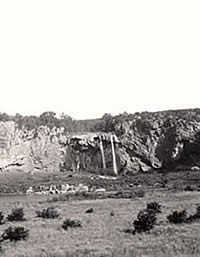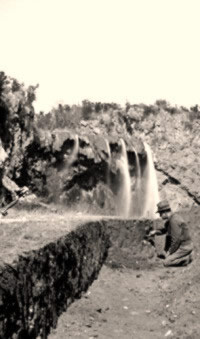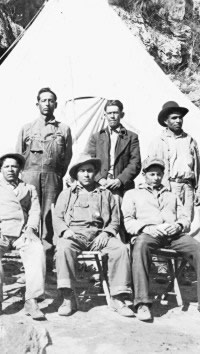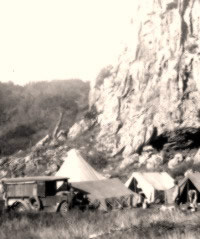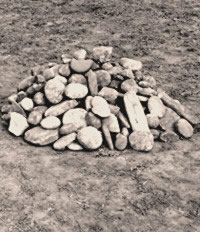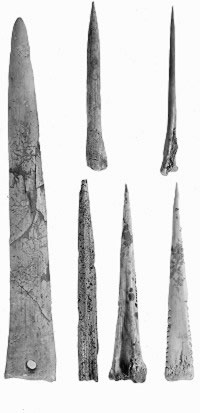Fall Creek Sites
The impending construction of the Highland Lakes dams in the late 1930s prompted a massive archeological survey and salvage operation in the Colorado River basin. Among the hundreds of sites discovered were the Fall Creek sites (41LL4 and 41SS2) in northeastern Llano and southeastern San Saba counties. These sites were located where the spring-fed waters of Fall Creek enter the Colorado River, an area of abundant natural resources. Overhangs and recesses in the bluffs provided shelters. High-quality chert for making tools, and stone for hot rock cooking was plentiful. The fertile river terraces provided habitat for a host of animals and plants, while the deep river harbored fish, turtle, and other aquatic animals. Such resources made the setting extremely attractive to prehistoric groups who repeatedly visited the area for over 4,000 years.
The Fall Creek sites were investigated in 1937 by researchers from the University of Texas at Austin prior to inundation by the Buchanan Dam flood pool. Because the sites would quickly be lost to the waters of Lake Buchanan, the archeologists fully excavated all cultural features, such as hearths and middens. Unfortunately, the field techniques of the time were somewhat crude, by today's standards. Excavated sediment was not screened, and only readily identifiable artifacts, such as projectile points, potsherds, and grinding stones, were collected and brought back to the lab.
Fall Creek Site No. 3 in Llano County and Fall Creek Site No. 2 in San Saba County were separated by a steep bluff which marked the border between the two counties. While the two sites lie in separate counties they are generally considered as one site bisected by Fall Creek. Within the bluffs on the San Saba (north) side were a number of small rockshelters and two caves which, along with eight midden areas on both sides of Fall Creek, comprised the site. Excavators recovered large quantities of artifacts from both sites, including grinding implements (manos and metates), dart points, arrow points, knives, drills and potsherds dating to the Archaic and Late Prehistoric periods. While most of the chipped stone was of local origin, one of the arrow points recovered was made of obsidian, an exotic black volcanic glass not found in Texas.
Eleven burials were discovered at the site. Seven of these contained the remains of infants while the other four were those of adults. The adult remains dated to the Archaic and Late Prehistoric periods while the infant remains could not be dated.
The excavations at Fall Creek were part of a far-reaching survey and excavation effort undertaken in conjunction with the construction of dams in river basins across the country by the Works Progress Administration (WPA) during the Great Depression. The central Texas dams created a string of reservoirs known as the Highland Lakes. While the techniques used by the early excavators left much to be desired, these excavations laid much of the groundwork on which later Texas archeologists would build. A report on the Fall Creek Sites was written by J. E. Pearce in the Annual Report of WPA and the University of Texas Archaeological Research, Lake Buchanan 1936-1937 compiled by A. T. Jackson in 1938 for University of Texas at Austin.
